Latest Posts by duxgregis - Page 2

I plucked the stars for my girlfriend tonight
![Galactic Rose [1589x1178] - For More Images Of The Cosmos Click Here](https://64.media.tumblr.com/08cc93e8696bb9c5dd5f87e05f5d1cd4/tumblr_ozh33sc7Bp1w094hwo1_500.png)
Galactic Rose [1589x1178] - For more images of the cosmos Click Here
Matilda's got all the shades to grey to throw at you






apparently e.l. james called former child star mara wilson (matilda) a “sad fuck” for critiquing the 50shades books a while ago and now there’s a feud. i love it.
Never forsaken

“You were never forsaken in this magnitude.” Mikael Aldo
everyone always talks about the wendys twitter, but






let’s talk about moonpie’s twitter

Four open clusters (M103, Owl Cluster, and two Caldwells) Visit http://spaceviewsandbeyond.blogspot.com/2017/11/four-open-clusters-m103-owl-cluster-and.html for more space pics
Always a better tomorrow
A Hitchhiker’s Ride to Space
This month, we are set to launch the latest weather satellite from the National Oceanic and Atmospheric Administration (NOAA). The Joint Polar Satellite System-1, or JPSS-1, satellite will provide essential data for timely and accurate weather forecasts and for tracking environmental events such as forest fires and droughts.

Image Credit: Ball Aerospace
JPSS-1 is the primary satellite launching, but four tiny satellites will also be hitchhiking a ride into Earth orbit. These shoebox-sized satellites (part of our CubeSat Launch Initiative) were developed in partnership with university students and used for education, research and development. Here are 4 reasons why MiRaTA, one of the hitchhikers, is particularly interesting…

Miniaturized Weather Satellite Technology
The Microwave Radiometer Technology Acceleration (MiRaTA) CubeSat is set to orbit the Earth to prove that a small satellite can advance the technology necessary to reduce the cost and size of future weather satellites. At less than 10 pounds, these nanosatellites are faster and more cost-effective to build and launch since they have been constructed by Principal Investigator Kerri Cahoy’s students at MIT Lincoln Laboratory (with lots of help). There’s even a chance it could be put into operation with forecasters.

The Antenna? It’s a Measuring Tape
That long skinny piece coming out of the bottom right side under MiRaTA’s solar panel? That’s a measuring tape. It’s doubling as a communications antenna. MiRaTA will measure temperature, water vapor and cloud ice in Earth’s atmosphere. These measurements are used to track major storms, including hurricanes, as well as everyday weather. If this test flight is successful, the new, smaller technology will likely be incorporated into future weather satellites – part of our national infrastructure.

Tiny Package Packing a Punch MiRaTA will also test a new technique using radio signals received from GPS satellites in a higher orbit. They will be used to measure the temperature of the same volume of atmosphere that the radiometer is viewing. The GPS satellite measurement can then be used for calibrating the radiometer. “In physics class, you learn that a pencil submerged in water looks like it’s broken in half because light bends differently in the water than in the air,” Principal Investigator Kerri Cahoy said. “Radio waves are like light in that they refract when they go through changing densities of air, and we can use the magnitude of the refraction to calculate the temperature of the surrounding atmosphere with near-perfect accuracy and use this to calibrate a radiometer.”

What’s Next?
In the best-case scenario, three weeks after launch MiRaTA will be fully operational, and within three months the team will have obtained enough data to study if this technology concept is working. The big goal for the mission—declaring the technology demonstration a success—would be confirmed a bit farther down the road, at least half a year away, following the data analysis. If MiRaTA’s technology validation is successful, Cahoy said she envisions an eventual constellation of these CubeSats orbiting the entire Earth, taking snapshots of the atmosphere and weather every 15 minutes—frequent enough to track storms, from blizzards to hurricanes, in real time.
Learn more about MiRaTA
Watch the launch!

The mission is scheduled to launch this month (no sooner than Nov. 14), with JPSS-1 atop a United Launch Alliance (ULA) Delta II rocket lifting off from Space Launch Complex 2 at Vandenberg Air Force Base in California. You’ll be able to watch on NASA TV or at nasa.gov/live.

Watch the launch live HERE on Nov. 14, liftoff is scheduled for Tuesday, 4:47 a.m.!
Make sure to follow us on Tumblr for your regular dose of space: http://nasa.tumblr.com.
Helicopters Arrive at National Archives for Exhibit Opening

Last night, the North Carolina Vietnam Helicopter Pilots Association installed three Vietnam War-era aircraft on the lawn of the US National Archives. The Vietnam veterans will be giving tours of the helicopters starting today and the “Remembering Vietnam” exhibit opens to the public this Friday, November 10.
Read more about the exhibit opening here. See a timelapse of the helicopter installation on the National Archives Foundation Facebook page.
I really think I've exhausted the list of WWII documentaries, fiction films, docu-dramas, government films, and television series. And WWII alternate universe stories too. Damn... #NerdConfessions
Any guy: I love history, I find it really interesting. Especially-
Me cutting him off, rubbing my temples: especially World War II. Yeah
Yeah. We get it. We've all seen Saving Private Ryan, and played Wolfenstein at some point in our lives.
Any guy: I love history, I find it really interesting. Especially-
Me cutting him off, rubbing my temples: especially World War II. Yeah
I wonder what affect these types of events have on human perceptions
September 2017 Was 🔥 on the Sun
The Sun started September 2017 with flair, emitting 31 sizable solar flares and releasing several powerful coronal mass ejections, or CMEs, between Sept. 6-10.

Solar flares are powerful bursts of radiation. Harmful radiation from a flare cannot pass through Earth’s atmosphere to physically affect humans on the ground, however — when intense enough — they can disturb the atmosphere in the layer where GPS and communications signals travel.

CMEs are massive clouds of solar material and magnetic fields that erupt from the Sun at incredible speeds. Depending on the direction they’re traveling in, CMEs can spark powerful geomagnetic storms in Earth’s magnetic field.
As always, we and our partners had many missions observing the Sun from both Earth and space, enabling scientists to study these events from multiple perspectives. With this integrated picture of solar activity, scientists can better track the evolution of solar eruptions and work toward improving our understanding of space weather.

The National Oceanic and Atmospheric Administration (NOAA)’s Geostationary Operational Environmental Satellite-16, or GOES-16, watches the Sun’s upper atmosphere — called the corona — at six different wavelengths, allowing it to observe a wide range of solar phenomena. GOES-16 caught this footage of an X9.3 flare on Sept. 6, 2017.
This was the most intense flare recorded during the current 11-year solar cycle. X-class denotes the most intense flares, while the number provides more information about its strength. An X2 is twice as intense as an X1, an X3 is three times as intense, and so on. GOES also detected solar energetic particles associated with this activity.

Our Solar Dynamics Observatory captured these images of X2.2 and X9.3 flares on Sept. 6, 2017, in a wavelength of extreme ultraviolet light that shows solar material heated to over one million degrees Fahrenheit.

JAXA/NASA’s Hinode caught this video of an X8.2 flare on Sept. 10, 2017, the second largest flare of this solar cycle, with its X-ray Telescope. The instrument captures X-ray images of the corona to help scientists link changes in the Sun’s magnetic field to explosive solar events like this flare.

Key instruments aboard our Solar and Terrestrial Relations Observatory, or STEREO, include a pair of coronagraphs — instruments that use a metal disk called an occulting disk to study the corona. The occulting disk blocks the Sun’s bright light, making it possible to discern the detailed features of the Sun’s outer atmosphere and track coronal mass ejections as they erupt from the Sun.
On Sept. 9, 2017, STEREO watched a CME erupt from the Sun. The next day, STEREO observed an even bigger CME. The Sept. 10 CME traveled away from the Sun at calculated speeds as high as 7 million mph, and was one of the fastest CMEs ever recorded. The CME was not Earth-directed: It side-swiped Earth’s magnetic field, and therefore did not cause significant geomagnetic activity. Mercury is in view as the bright white dot moving leftwards in the frame.

Like STEREO, ESA/NASA’s Solar and Heliospheric Observatory, or SOHO, uses a coronagraph to track solar storms. SOHO also observed the CMEs that occurred during Sept. 9-10, 2017; multiple views provide more information for space weather models. As the CME expands beyond SOHO’s field of view, a flurry of what looks like snow floods the frame. These are high-energy particles flung out ahead of the CME at near-light speeds that struck SOHO’s imager.

Our Interface Region Imaging Spectrometer, or IRIS, captured this video on Sept. 10, 2017, showing jets of solar material swimming down toward the Sun’s surface. These structures are sometimes observed in the corona during solar flares, and this particular set was associated with the X8.2 flare of the same day.

Our Solar Radiation and Climate Experiment, or SORCE, collected the above data on total solar irradiance, the total amount of the Sun’s radiant energy, throughout Sept. 2017. While the Sun produced high levels of extreme ultraviolet light, SORCE actually detected a dip in total irradiance during the month’s intense solar activity.
A possible explanation for this observation is that over the active regions — where solar flares originate — the darkening effect of sunspots is greater than the brightening effect of the flare’s extreme ultraviolet emissions. As a result, the total solar irradiance suddenly dropped during the flare events.
Scientists gather long-term solar irradiance data in order to understand not only our dynamic star, but also its relationship to Earth’s environment and climate. We are ready to launch the Total Spectral solar Irradiance Sensor-1, or TSIS-1, this December to continue making total solar irradiance measurements.

The intense solar activity also sparked global aurora on Mars more than 25 times brighter than any previously seen by NASA’s Mars Atmosphere and Volatile Evolution, or MAVEN, mission. MAVEN studies the Martian atmosphere’s interaction with the solar wind, the constant flow of charged particles from the Sun. These images from MAVEN’s Imaging Ultraviolet Spectrograph show the appearance of bright aurora on Mars during the September solar storm. The purple-white colors show the intensity of ultraviolet light on Mars’ night side before (left) and during (right) the event.
For all the latest on solar and space weather research, follow us on Twitter @NASASun or Facebook.
GOES images are courtesy of NOAA. Hinode images are courtesy of JAXA and NASA. SOHO images are courtesy of ESA and NASA.
Make sure to follow us on Tumblr for your regular dose of space: http://nasa.tumblr.com.










a brief departure from the typical posts here…
while i try not to include my personal work in subtilitas, readers may have noticed content has been a little sparse here lately, largely due to a few large projects wrapping up. one of which is a book i’ve been involved with through the cactus store, which was just released this week.
xerophile is a compendium of desert plant and habitat photography three years in the making. a selection of over five hundred photographs of arguably the rarest and most bizarre plants on earth, photographed in their remote natural habitats over the past 80 years by a global cadre of obsessed cactus aficionados made up of both the amateur and the professional—from phd. botanist to banker, art teacher to cancer researcher. aside from the field photography, we’ve also included several interviews with the explorer’s themselves, who’s stories only add to the mystique of their images.
posts should begin to be more regular next week. thanks as always for reading.
My kind of lady

Happy birthday, Marie Curie! In 1903, Curie and her husband shared a Nobel Prize in Physics for the discovery of radium and polonium. She was the first woman to win this award and later, the first woman to become a professor at the University of Paris. In 1911 she won another Nobel Prize, this time in chemistry, for producing radium as a pure metal and for further studies on radioactive elements. During World War I, she devoted herself to using radioactivity to help people. She set up mobile x-ray vehicles for soldiers in France, which were nicknamed petites Curies (“little Curies”). In the 1920s, radium was considered a miracle cure—you could even buy “Radium” brand butter, cigarettes, and beer. We now know that radioactivity itself causes cancer, but thanks to Curie, radiation therapy is still used today as an effective way to target cancerous tissues. Photo: Tekniska museet
Women's Writing of Ancient Mesopotamia (New Book!)

A new book has just been released by Cambridge University Press entitled Women’s Writing of Ancient Mesopotamia An Anthology of the Earliest Female Authors!
It is an anthology of translations from the ancient Near East of various writings by women. The translations include letters, religious hymns, inscriptions, prophecies, and various other types of texts. All of them considered some of the earliest examples of writing done by women in history. The only downside is that the book is quite expensive right, but hopefully that will change in the future and/or a paperback edition will soon follow.
You can purchase it from Cambridge’s site, (even their U.K. site), or on Amazon where the Kindle is somewhat less expensive.
Regardless this is one of the best additions to ancient Near Eastern scholarship in recent years.
~Hasmonean
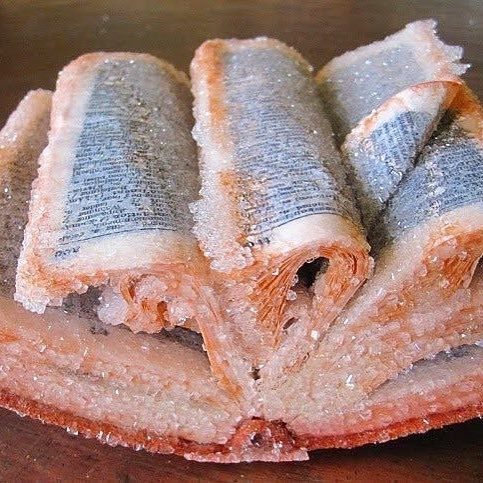
A book crystallized in the ocean
It’s so beautiful. It’s so beautiful it makes me want to cry. It’s the fulfillment of dozens, hundreds, thousands of people’s efforts, but it’s also the fulfillment of an idea suddenly becoming real.
Peter Saulson of Syracuse University, who has spent more than three decades working on the detection of gravitational waves.
Astronomers Strike Gravitational Gold In Colliding Neutron Stars
(via npr)
Au in some stars many, many, many AUs away.
I miss you even more than I could have believed; and I was prepared to miss you a good deal.
Vita Sackville-West, The Letters of Vita Sackville-West and Virginia Woolf (via mrs-princeton-dicaprio)
#ILoveIS
I have a new plan: to go mad.
Fyodor Dostoevsky, in a letter to his brother Michael (via ughpoems)
This man inspired my very first feature length screenplay. I'm very sad to hear he's gone

Stanislav Petrov was on overnight duty in 1983 when computers indicated the U.S. had launched a nuclear strike against his country. He had only a few nerve-jangling minutes to act. “ … they were lucky it was me on shift that night,” he says.
Science answers the easy questions.


Neil 2020





8.28.17
...what we stay alive for.
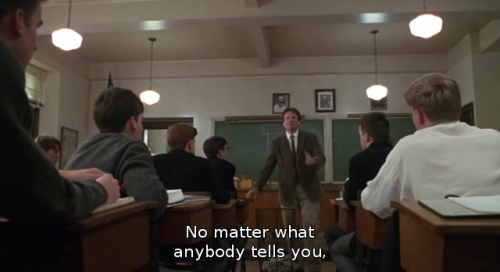
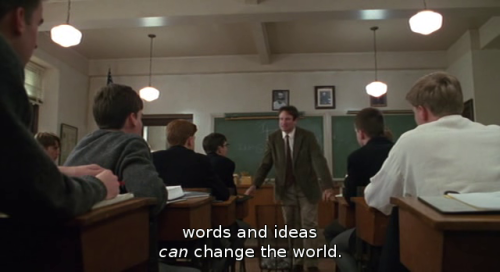
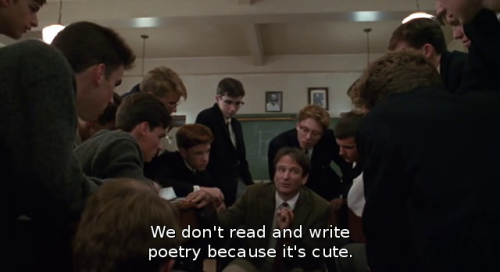


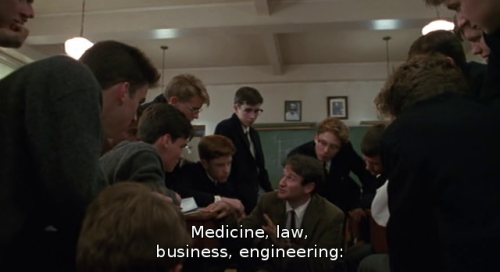


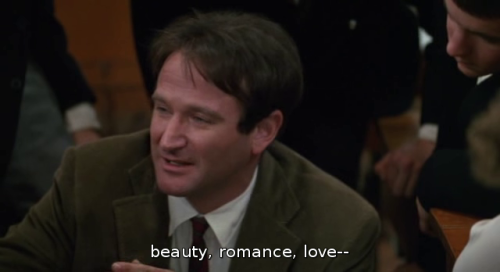

I second this
petition to ban “slideshow” as an article format on the internet
Nutmeg and Kerosene - Fahrenheit 451 by Ray Bradbury
Candle + Book Giveaway

Hey everyone! The Literary Snob is teaming up with The Happy Bard Candle Co. to do a double giveaway this September. We’re all on the same trivia team in the real world (Sean Bean Lives!) and I absolutely love Happy Bard’s literary inspired candles. They’re about to release their next line of literary candles and one of the new scents will be a fan submission! So we’re holding a contest and double giveaway to find the fairest combo in the land.
Reblog this post with your submission for a literary candle scent. You can send in as many submissions as your heart desires and tag anyone who dreams of being a candle virtuoso. The Happy Bard Candle Co. will pick their favorite submission at the end of the contest, create the candle, and send it to you! Plus I will send the winner one of the newly released Vintage Minis of your choice.
GIVEAWAY RULES
Reblog this post with a book & fragrance combo suggestion
Follow The Happy Bard Candle Co. on either Instagram or Facebook
Follow The Literary Snob on Tumblr
Have fun and be creative!
RULES
There is no limit on submissions, so reblog away! Currently, The Happy Bard Candle Co. cannot ship internationally, so anybody can participate but only those in the U.S. can win. Contest ends Saturday, Sept. 30 at midnight.
We look forward to seeing what everyone comes up with! Plus I might throw in an extra prize for whoever makes me laugh the hardest. Good luck!
The future is kelp




The push for renewable energy in the U.S. often focuses on well-established sources of electricity: solar, wind and hydropower. Off the coast of California, a team of researchers is working on what they hope will become an energy source of the future — macroalgae, otherwise known as kelp.
The Pacific Coast is known for its vast kelp forests. It’s one of the fastest-growing plants on Earth, and farming it requires no fertilizer, fresh water, pesticides, or arable land. “It can grow 2 to 3 feet per day,” says Diane Kim, one of the scientists running the kelp research project at the University of Southern California.
Kelp is transformed into biofuel by a process called thermochemical liquefaction. The kelp is dried out, and the salt is washed away. Then it’s turned into bio-oil through a high-temperature, high-pressure conversion process.
Some small companies are growing kelp as a substitute for kale in the U.S., but that’s exactly the problem – very, very few are doing it. Thus, the infrastructure and investment isn’t in place to make other products from kelp, like biofuel.
Scientists Hope To Farm The Biofuel Of The Future In The Pacific Ocean
Photos: Courtesy of David Ginsburg/Wrigley Institute, Monika Evstatieva/NPR (2) and Anjuli Sastry/NPR
Cherry blossom and hefeweizen - Man in the High Castle by Philip K. Dick

Candle + Book Giveaway

Hey everyone! The Literary Snob is teaming up with The Happy Bard Candle Co. to do a double giveaway this September. We’re all on the same trivia team in the real world (Sean Bean Lives!) and I absolutely love Happy Bard’s literary inspired candles. They’re about to release their next line of literary candles and one of the new scents will be a fan submission! So we’re holding a contest and double giveaway to find the fairest combo in the land.
Reblog this post with your submission for a literary candle scent. You can send in as many submissions as your heart desires and tag anyone who dreams of being a candle virtuoso. The Happy Bard Candle Co. will pick their favorite submission at the end of the contest, create the candle, and send it to you! Plus I will send the winner one of the newly released Vintage Minis of your choice.
GIVEAWAY RULES
Reblog this post with a book & fragrance combo suggestion
Follow The Happy Bard Candle Co. on either Instagram or Facebook
Follow The Literary Snob on Tumblr
Have fun and be creative!
RULES
There is no limit on submissions, so reblog away! Currently, The Happy Bard Candle Co. cannot ship internationally, so anybody can participate but only those in the U.S. can win. Contest ends Saturday, Sept. 30 at midnight.
We look forward to seeing what everyone comes up with! Plus I might throw in an extra prize for whoever makes me laugh the hardest. Good luck!
He always fell for puppies.










If you’re looking for cute you’ve come to the right place! Thanks to the Naval Photographic Center, which filmed many of President Ford’s activities, we have footage of Liberty’s puppies playing in the White House Rose Garden. President Ford, Mrs. Ford, and Susan had a photo shoot with the little golden retrievers on November 5, 1975, followed by frolicking and general adorableness.
We’ve highlighted some of our favorite moments above. Watch the full video and pick your own!
Want to see more puppy adventures? Check out the Pupdates!


The total solar eclipse which crossed from Alaska to Texas spurred many to make the trip West in 1878. Dr. Henry Draper, a medical doctor and former chair of physiology at New York University, assembled a group who watched the eclipse from the railroad outpost of Rawlins, Wyoming Territory and made some observations.

Mustard gas and roses - Slaughter House 5 by Kurt Vonnegut
Candle + Book Giveaway

Hey everyone! The Literary Snob is teaming up with The Happy Bard Candle Co. to do a double giveaway this September. We’re all on the same trivia team in the real world (Sean Bean Lives!) and I absolutely love Happy Bard’s literary inspired candles. They’re about to release their next line of literary candles and one of the new scents will be a fan submission! So we’re holding a contest and double giveaway to find the fairest combo in the land.
Reblog this post with your submission for a literary candle scent. You can send in as many submissions as your heart desires and tag anyone who dreams of being a candle virtuoso. The Happy Bard Candle Co. will pick their favorite submission at the end of the contest, create the candle, and send it to you! Plus I will send the winner one of the newly released Vintage Minis of your choice.
GIVEAWAY RULES
Reblog this post with a book & fragrance combo suggestion
Follow The Happy Bard Candle Co. on either Instagram or Facebook
Follow The Literary Snob on Tumblr
Have fun and be creative!
RULES
There is no limit on submissions, so reblog away! Currently, The Happy Bard Candle Co. cannot ship internationally, so anybody can participate but only those in the U.S. can win. Contest ends Saturday, Sept. 30 at midnight.
We look forward to seeing what everyone comes up with! Plus I might throw in an extra prize for whoever makes me laugh the hardest. Good luck!